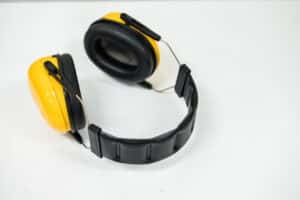
Introduction
The Occupational Safety and Health (Noise Exposure) Regulations 2019 were put into effect by DOSH to address the significant risks associated with excessive noise exposure in the workplace.
Excessive noise not only affects employees’ productivity but also poses significant risks to their hearing health. As a responsible employer in Malaysia, it’s crucial to prioritize your employees’ well-being by managing noise levels effectively. In this article, we will explore eight practical tips on how to manage noise and create a more productive work environment that you can apply at your company.
1. Assess the Noise Levels (Noise Risk Assessment)
Start by conducting a comprehensive noise risk assessment of the noise levels in your workplace. The DOSH Noise Exposure Regulations 2019 instructs that all companies must conduct Noise Monitoring in order to reduce noise-induced hearing loss (NIHL) among company employees. This initial evaluation will provide valuable insights into where improvements can be made.
2. Implement Engineering Controls
Consider implementing engineering controls to reduce noise levels. This could involve installing sound-absorbing materials on walls, floors, and ceilings, or investing in noise-cancelling technology. These measures can help create a more peaceful work environment and minimize the risk of hearing damage.
3. Establish Quiet Zones
Designate specific areas within your workspace as “quiet zones.” These zones should be free from excessive noise, allowing employees to concentrate on tasks that require focus. Encourage colleagues to respect these areas and keep noise to a minimum.
4. Utilize Personal Protective Equipment (PPE)

Provide employees with appropriate personal protective equipment, such as earplugs or earmuffs, to minimize the impact of excessive noise. Educate your workforce on the correct usage of these devices to ensure maximum effectiveness in noise reduction.
5. Educate Employees on Noise Hazards
Raise awareness among your employees about the dangers of excessive noise exposure. Conduct training sessions or workshops on hearing conservation and the potential consequences of prolonged exposure to loud noise. By educating your staff, you empower them to take responsibility for their own hearing health. You can refer to the ICOP (Industrial Code of Practice) for management of occupational noise exposure and hearing conservation.
6. Encourage Breaks and Rest Periods
Implement regular breaks and rest periods in your employees’ schedules. This not only promotes overall well-being but also helps reduce the cumulative effects of noise exposure. Encourage employees to step away from noisy areas during breaks to give their ears a rest.
7. Promote Effective Communication
Excessive noise can hinder effective communication among colleagues, leading to misunderstandings and decreased productivity. Encourage the use of alternative communication methods, such as instant messaging or designated quiet areas for discussions, to ensure clear and efficient communication.
8. Invest in Hearing Conservation Training
To reinforce your commitment to employee well-being, consider investing in professional hearing conservation training. Such training programs provide valuable knowledge and skills to employees, equipping them with the tools needed to protect their hearing in the workplace.
Conclusion
Managing noise levels in the workplace is vital for both productivity and employee well-being. By implementing these eight tips, you can create a quieter work environment in Malaysia, reducing the risk of hearing damage and improving overall job satisfaction. Remember, investing in hearing conservation training not only showcases your dedication to employee health but also ensures a more productive workforce in the long run. Prioritize your employees’ hearing health today, and reap the benefits tomorrow!








